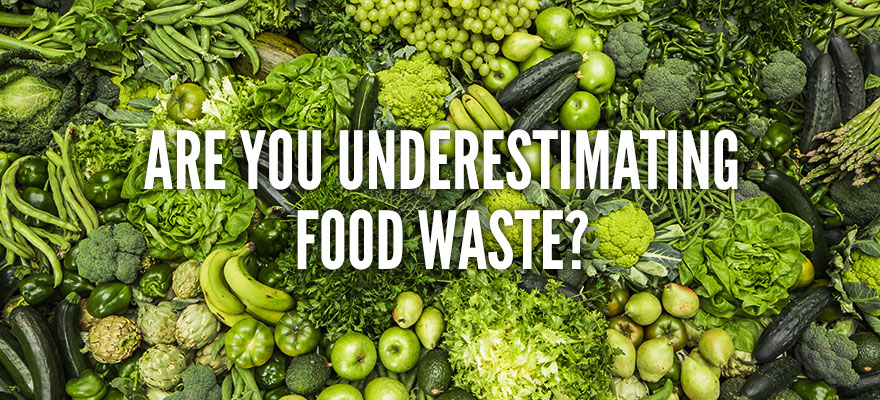Food Waste Intelligence
Subscribe to Food Waste Intelligence
Get our latest posts delivered right to your inbox.

Most Consumer Survey Respondents Say They Waste ‘Less than the Average American’
Last month the results from a unique consumer-focused food waste survey were released. The study was conducted in 2014 with research funded by the Johns Hopkins Center for a Livable Future. As far as the researchers know, it’s the first nationally representative consumer-focused U.S. food waste survey of its kind.
The survey asked a series of questions including how “aware” consumers are about wasted foods, what shapes their behavior, and what motivates them. Also, of particular interest to our readers in the foodservice industry, respondents were also asked what changes they would support in the retail and restaurant industry to help prevent wasted food.
Here are a few highlights from the survey results that I found to be particularly interesting (you can read the full study here):
-
Three-quarters of respondents said they discard less food than the average American.
When asked to estimate how much food they personally discard, 13% reported that they did not discard any food with 56% estimating that they discarded 10% of their food. We know from studies of consumer food waste that the average amount discarded by U.S. families is 25%. In this survey, only 10% of respondents estimated discarding 30% or more. So it’s safe to say that most are under-estimating their waste—where do you think you fall? -
When asked about what motivates them to reduce waste, the leading responses were saving money and setting a good example for children. Concern for the environment ranked last.
This is a very interesting finding, suggesting that campaigns and messages targeted at reducing wasted foods should focus on pocketbooks and setting a good example, rather than helping to combat the negative effects of GHG emissions. It is unclear why this ranked last, but it could be because as individuals we perceive ourselves as small fish in a huge ocean, unable to really impact an issue that’s so massive. Of course, we know this isn't accurate: there’s much we can do as individuals. -
42% of respondents indicated that they had seen or heard information in the last year about wasted food. 16% of respondents had sought out information about how to reduce food waste.
Overall, many respondents felt that they were knowledgeable about food waste, with 24% describing themselves as “very knowledgeable” and 38% saying they were “fairly knowledgeable.” This tells us that people are hearing the message—a very good thing. Many people are more educated and informed about food waste, so consumer-focused messaging in foodservice should take this into consideration. -
When making decisions about whether to discard food, 39% of respondents pay attention to the “use by” date while 22% use the “sell by” date as an indicator.
Overall, 91% of respondents pay attention to date labels. Confusion around date labels and what they actually mean is a big issue as recently highlighted in the Harvard University Sustainability report on How Confusing Food Date Labels Lead to Food Waste in America. There’s much more work to be done in this area as it related to education and regulation. -
When asked how difficult it would be to significantly reduce the amount of food discarded, 43% reported that it would be “easy” or “very easy.”
This data point is encouraging since consumers see the opportunity and don’t perceive it to be difficult. That’s the first step toward change. However, this does raise a puzzling question: if it’s so easy to reduce the amount of food wasted, why isn’t it happening? How can we raise motivation levels to take action?
Feedback for Restaurants
Respondents were also asked about what changes they would find acceptable for restaurants to make that would help to reduce food waste. The top response was donating excess food (73%), followed by serving smaller portions (61%), making items to order (37%) and providing smaller salad bar plates (30%).
We’ve highlighted surveys in the past that show diners increasingly care about what restaurants are doing to prevent food waste, including food donation programs and food waste prevention programs. While measurement of waste wasn’t on the list, most of our LeanPath customers report that their customers are very pleased to hear about their efforts!
So what can we learn from this survey overall? There’s still work to be done, but people are paying attention to food waste in new and greater ways. From the restaurateur’s perspective, consumers will respect your focus on wasted food as an important priority, valuing donation programs and being open-minded about smaller portions and smaller plates if introduced carefully and appropriately.